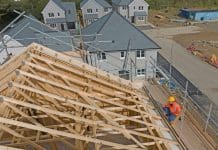The introduction of the domestic VAT reverse charge for building and construction services has been delayed by a year. Phil Hall of the Association of Accounting Technicians takes a look at what this means for construction firms – and why the issue shouldn’t be kicked into the long grass
In September, the government confirmed that the introduction of the domestic VAT reverse charge for building and construction services will be delayed for a period of 12 months until 1 October 2020.
What is the reverse charge?
The reverse charge sees the customer who gets supplies of construction services responsible for the VAT due on these supplies on their VAT return instead of the supplier.
It applies exclusively to transactions between VAT registered contractors and subcontractors who are registered for the Construction Industry Scheme (CIS). It applies to both standard and reduced-rate VAT supplies but not to zero-rated supplies.
There are numerous exemptions, including the manufacture of components for systems of heating, lighting, air conditioning, ventilation, power supply, drainage, sanitation, water supply or fire protection and the installation of seating, blinds and shutters, as well as the installation of security systems, including burglar alarms, closed circuit television and public address systems.
If any non-reverse charge supplies are supplied with supplies that are subject to the domestic reverse charge, then the whole supply is then subject to the domestic reverse charge.
Why introduce a reverse VAT charge?
In 2018, the government stated that the VAT reverse charge is “an anti-fraud measure which removes the opportunity for fraudsters to charge VAT and then go missing, before paying it over to the Exchequer”.
Apparently, VAT fraud in construction sector labour supply chains has been a real problem, with criminals fraudulently taking over or creating shell companies to steal VAT while operating alongside actual construction services. This ‘missing trader’ fraud is thought to be costing the taxpayer tens of millions of pounds a year.
The reverse charge is forecast to save the taxpayer £90m of lost revenue during its first year of operation alone.
What does this mean in practice?
Approximately 150,000 affected businesses will have to change their systems for dealing with VAT. For many, there will be a negative impact on cash-flow because they will no longer receive VAT payments.
In recent months, various organisations have highlighted that most affected businesses did not know about the change and those that did often did not understand exactly what was required of them or how to go about implementing change.
Reaction to 12-month delay
The announcement was welcomed by many, including Association of Accounting Technicians (AAT), who had previously backed the National Federation of Builders and Federation of Master Builders in calling for a delay to its implementation.
Making the payment of VAT the responsibility of the customer rather than the supplier is an enormous change to the system and yet guidance on the changes was published less than a year before it was originally due to come into force and left several questions unanswered.
Given the magnitude of the change, the short notice and the general lack of awareness as to what the charge means in practice, not to mention some reported software problems, it was clear that a delay was essential to the long-term success of this change.
The government doesn’t always get it right, is sometimes criticised for thoughtless U-turns and is often accused of having a tin ear but on this issue, it should be commended for listening carefully to the views of stakeholders and doing the right thing.
The year ahead
Of immediate concern is what the delay means for those businesses that have already changed their invoicing to meet the needs of the reverse charge, only for it to be delayed at this very late stage. Reassuringly, HMRC has acknowledged that they will be sympathetic to any errors and difficulties that this may have caused.
So, what next? The important thing for all affected parties, those in the construction industry, their accountants, software providers and, of course, HMRC is that this additional year is not wasted and that we don’t find ourselves in a similar position as the October 2020 deadline approaches.
When making the announcement to delay, HMRC also confirmed it will, “work closely with the sector to raise awareness and provide additional guidance and support to make sure all businesses will be ready for the new implementation date”. This is welcome news and HMRC must be held to this commitment.
Similarly, professional bodies in the accountancy sector and the construction industry must promptly commence awareness campaigns for their members. AAT is holding numerous events around the country on the subject and is providing CPD and news updates as well as information via member discussion forums and the like.
It would help if the Confederation of British Industry (CBI) and Federation of Small Businesses (FSB) were to actively promote awareness and understanding too. If you remain unclear about what is expected then seek professional advice from an AAT licensed accountant, a similarly qualified expert or contact HMRC directly.
The message to affected businesses is clear: you have more time, use it wisely and prepare for the October 2020 deadline now.
Head of Public Affairs & Public Policy
Association of Accounting Technicians
Tel: +44 (0)7392 310 264
Twitter: @PhilHallAAT














